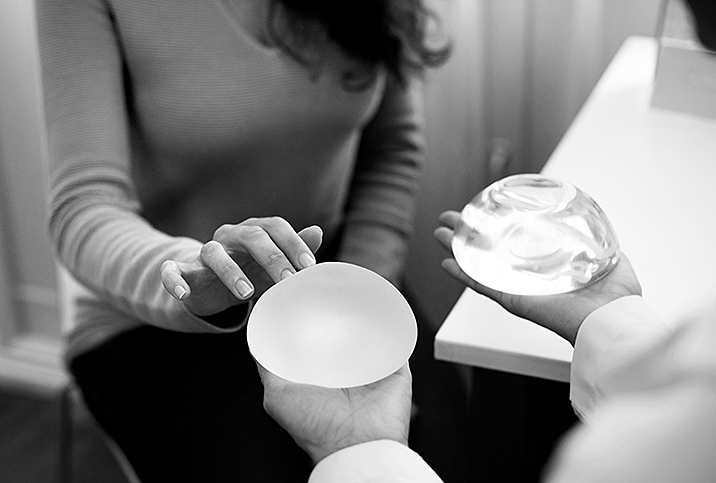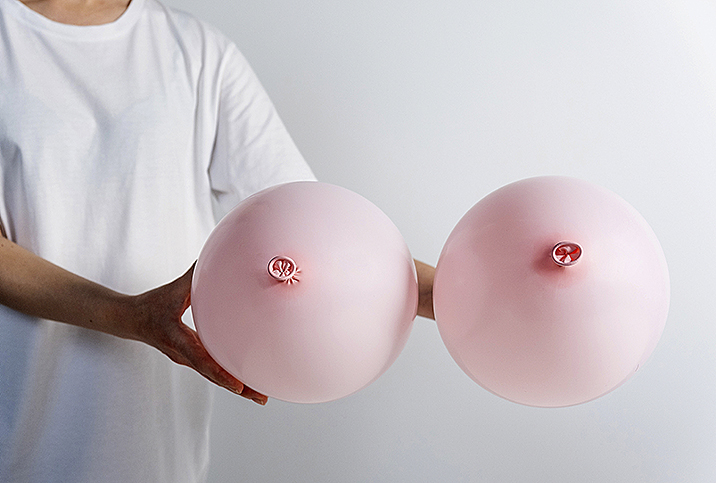Life With a 'Mini Boob'

When Carla Barrow, 44, first noticed that one of her developing breasts was four sizes bigger than the other, she was 11 years old and thought the "mini boob" would eventually catch up.
"It was noticeable, but I kept it hidden," Barrow said. "I used to walk around with my arm up covering my left side. I would always wear a coat, even in the summer, but that just drew more attention to me."
Barrow, who is the mother of four children, nicknamed her mini boob a "moob." She told her mother about the defect. Her mother took her to the doctor, who then referred her to a breast surgeon, who diagnosed Barrow with Poland syndrome.
Barrow is among the 1 in 10,000 people who have the disorder, which causes underdeveloped chest muscles, typically on one side of the body. Some experts believe the cases of Poland syndrome may be underreported due to adolescents not addressing it with a doctor until later in life.
Another uncommon condition that creates asymmetrical breasts is juvenile breast hypertrophy. "Trauma to the breast, especially early in breast development, may lead to significant size differences," explained Deanna Attai, M.D., associate clinical professor of surgery at the David Geffen School of Medicine at the University of California Los Angeles. "However, in most women, there is no known or identifiable underlying cause of the size asymmetry."
In about 75 percent of Poland syndrome cases, it's the right side of the body that is underdeveloped, according to a National Organization for Rare Disorders (NORD) report.
1 in 10,000 people have the disorder, which causes underdeveloped chest muscles, typically on one side of the body.
"Sudden changes in the size of one breast may be associated with infection or other inflammatory condition, or malignancy," Attai said. "Any change should be an indication to follow up with your physician for a full evaluation."
In Barrow's case, it was the left side of her chest that was underdeveloped. The surgeon recommended corrective surgery with a breast implant. "The first implant went really hard, like a golf ball inside," remembered Barrow. "I had it removed and replaced with another implant. I've had seven replacements over the years."
With societal expectations of what a woman should look like, some women with Poland syndrome may experience self-esteem issues.
"Every woman is different," Attai said. "Some women, after learning that there is no underlying medical condition, are perfectly happy and do not seek any corrective action. For women who are not interested in surgery, proper bra fitting is important—usually a cup size to fit the larger breast and then the use of a prosthesis of some type on the smaller side is recommended."
For women who are interested in surgery, the options are individualized. "They may include a reduction and lift on the larger side, or possibly an implant placement on the smaller side," Attai explained.
After years of having an implant, Barrow decided to go natural and wear a prosthetic. Three weeks ago, her implant was removed.
"After reading about breast implant illness and ticking off every single symptom, more or less, I made the decision to go back to my surgeon to ask if I could have it removed," she said. "I didn't want another implant put in."
Symptoms women have attributed to breast implant illness include hormone disruption, rashes, constant sternum pain, bruising, nausea, numbness in the limbs, joint pain, sensitivity to cold, dimming eyesight, nerve pain and headaches.
Barrow said her removal surgery, which was completed in July 2021, has resulted in positive outcomes that outweigh the negatives of having a mini boob.
"The toxic bag has been making me ill for years," she said. "Having it removed has made me happy."
Additionally, her mini boob has become fuller as a result of multiple breast implant surgeries. "The last implant I had replaced, the surgeon put an expander in and filled it out with sterile salt water every month to stretch the skin, so now that the implant has been removed, the mini boob is not as mini as it used to be," Barrow explained. "It's grown a bit because the skin has been stretched."
When she looks in the mirror now, Barrow said, she hasn't had any feelings of low self-esteem.
"I can't wear a bra yet, so I've been having to wear a coat out in the summer until the scars are healed," she said. "The feminine side of having cleavage is the main thing that I miss."


















